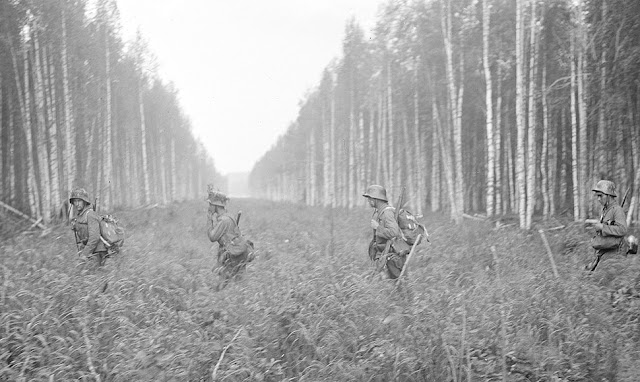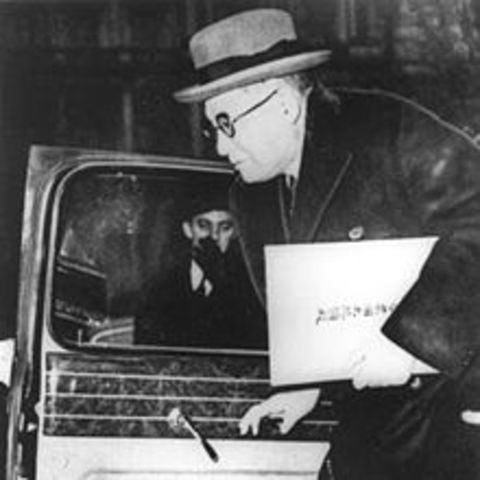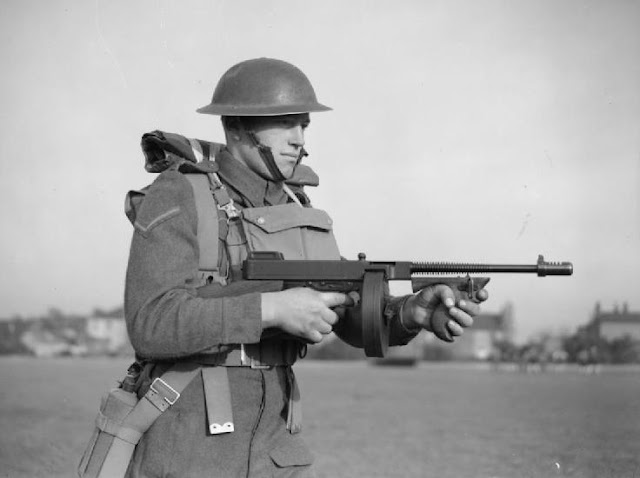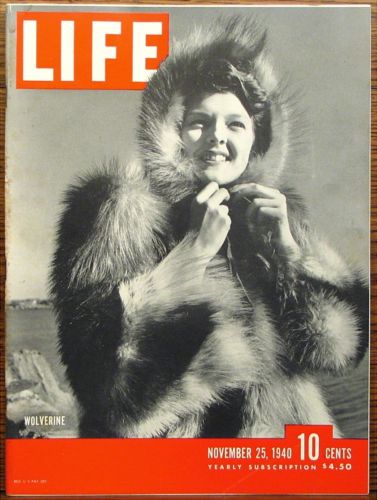Saturday 12 July 1941
 |
| German Fallschirmjäger II./Fallsch.Sturm- regiment parade in Goslar, Crete, July 12, 1941. |
In the Far North sector, the Finns continue to make progress while the Germans farther north are stuck. Finnish Army of Karelia captures Kokkari and Tolvayarvi northeast of Lake Ladoga.
In the Army Group North sector, XLI Panzer Corps reaches the Plyussa River. The terrain is more of a hindrance to the German advance than the Soviet resistance. General Halder notes in his war diary that General Erich Hoepner's 4th Panzer Group is "growing increasingly tired and weak," which accounts for the panzers making "no substantial advance in the direction of Leningrad." However, the Soviets are withdrawing, giving the German tankers some time to rest.
In the Army Group Center sector, the Soviets are counterattacking against General Hoth's 3rd Panzer Group at Vitebsk. The Soviets have a large troop concentration at Nevel composed of stragglers collected from all across the front, and they are using this motley assortment to attack southward. German Ninth Army is rapidly closing on Hoth's panzers and providing some support. Hoth's tanks and General Guderian's 2nd Panzer Group forces are attacking north and south of Orsha, respectively.
In the Army Group South sector, the Soviets are in full retreat to the Dniestr River to the south of Kyiv. The Soviets attempt a counterattack at Korosten, but Sixth Army shrugs it off. Panzer Group 1 is involved in a more serious battle around Berdichev. General Halder notes in his war diary that General Paulus has submitted some aerial photographs of Kyiv from which "one does not get the impression of unusually extensive preparations for a large-scale withdrawal" - which is a classic understatement for the likelihood that the Soviets intend to make a major stand in defense of Kyiv. Meanwhile, Romanian troops make an advance to Balti.
 |
| "A 15-cwt truck passes a sentry as it leaves Fort Weygand at Palmyra, Syria, 12 July 1941" (© IWM (E 4079)). |
During the fighting, the Vichy French in the Levant lost:
- 1092 killed (according to Vichy commander General Henri Dentz)
- 1790 wounded
- 466 missing
- 3004 taken prisoner
- 5688 defecting to the Free French
- 179 aircraft (most destroyed on the ground)
- 1 submarine
- 1552 Australian casualties (416 killed, 1136 wounded)
- 1300 (approximate) Free French casualties
- 1800 British and Indian casualties
- 1200 British captured
- 3150 sick (350 malaria cases)
- 27 aircraft (RAF and RAAF)
Unbeknownst to the British, the Vichy French transport some British and Commonwealth prisoners out of the country by plane today. When they learn of this, the British are angered and demand their return. This will lead to the only complications to the ending of the conflict.
Vichy French submarines Caiman and Morse depart Beirut for Tunisia.
 |
| Martin B-26 Marauder in flight near Wright Field, Ohio, July 12, 1941. |
The RAF also sends three Stirling bombers to destroy the Arques "ship-lift" near St. Omer. The raid is a failure, the bombers completely miss the target and instead hit the town. All aircraft return without incident.
After dark, RAF Bomber Command sends 33 Hampden and 2 Wellington bombers against Bremen. The RAF loses two Hampdens.
Wing Commander Douglas Bader shoots down a Bf 109 and damages three others over Pas-de-Calais, France.
 |
| Wittmann (left) with StuG III Ausf.A, somewhere in Russia, July 12, 1941. |
Having recently transferred to the far north of Norway, German destroyers patrol off the Kola Peninsula (off Cape Teribirski, Kharlov). They run into a Soviet convoy and sink:
- Patrol vessel Passat
- Auxiliary patrol ship RT 67 (trawler Molotov)
A Lockheed Hudson bomber S/N T9452 of RAF No. 269 Squadron crashes while escorting a convoy in the Denmark Strait off Iceland. The plane and its four-man crew are never found.
Convoy OG-68 departs from Liverpool bound for Gibraltar, Convoy SC-37 departs from Sydney, Cape Breton Island, Nova Scotia, bound for the Clyde.
Royal Navy minesweepers HMS Taitam and Waglan are laid down.
U-160 launched, U-415 laid down.
 |
| Canadian Car & Foundry G-23 Goblin, RCAF (Serial No. 339), gear up belly landing, 12 July 1941. (Library and Archives Canada Photo, MIKAN No. 3616063). |
- 5483-ton Dutch freighter Alphard (damaged, four deaths)
- 1977-ton Greek freighter Patria (sunk, raised after the war)
During the night, the Luftwaffe sends 20 planes to mine the Suez Canal.
Royal Navy Otus departs from Gibraltar bound for Malta, carrying supplies.
At Malta, there are no air raids. However, a Wellington bomber taking off from Luqa Airfield bound for Cairo crashes, killing all eight on board.
 |
| Finnish soldiers crossing the 1940-agreed border (Moscow Peace Treaty) at Tohmajärvi on 12 July 1941, two days after the invasion of Karelia started. |
- Soviet destroyer Bditelny (badly damaged)
- Soviet destroyer Kharkiv (slightly damaged)
German/Ukrainian Relations: The Gestapo arrests members of the nationalist, anti-Soviet Provisional Ukrainian Government. While these would be useful allies against the Soviet Union, Hitler does not want any impingement on absolute German rule.
 |
| Stalin and Molotov watch Sir Stafford Cripps sign a treaty at the Kremlin, 12 July 1941. |
- "The two Governments mutually undertake to render each other assistance and support of all kinds in the present war against Hitlerite Germany.
- "They further undertake that during this war they will neither negotiate nor conclude an armistice or treaty of peace except by mutual agreement."
The first point has been clarified already by the British as "mutual help without any precision as to quantity or quality - a key point for Stalin, who wants a lot of aid. The second point - the one about not making a separate piece - is critical to the British. Prime Minister Winston Churchill has a long memory, and that includes the pact made with Lenin in 1918 that very nearly enabled the Germans to take Paris. In this case, there are indications at certain points during the war that Stalin may entertain similar ideas, pact or no pact.
The Office of the Coordinator of Research and Development goes into operation. Its mandate is to unify the U.S. Navy's research activities, and to evaluate the best ways of advising tactical officers of air, ground, and sea forces of the "latest applications of science to the problems of modern warfare."
Italian Military: General Gariboldi, who has been in disfavor for some time, officially is replaced as Commander-in-chief of Axis forces in North Africa and Governor of Libya. His replacement is General Ettore Bastico. Officially, this makes Bastico Rommel's superior in the chain of command to Afrika Korps commander General Erwin Rommel. This, however, is not the reality of the situation.
Bastico is difficult, autocratic, and violent, but Rommel pays him no mind. Privately, Rommel calls Bastico "Bombastico," but, in fact, Rommel kind of likes him and later describes Bastico as a "fundamentally decent man with a sober military understanding and considerable moral stamina." Whenever Bastico tries to interfere in his plans, Rommel simply rings up Commando Supremo in Rome and gets his way, and whenever Commando Supremo disagrees, he calls OKW in Berlin and has them exert their influence. The bottom line is that Rommel simply does what he wants without regard to Bastico's wishes.
Montenegro: In line with Italy's agreement with the Reich, Montenegro's national assembly restores the monarchy - giving at least nominal control to Italy.
 |
| Venice, California Japanese Community Association Picnic dated July 12, 1941. |
SS Officer Felix Landau, a member of an Einsatzkommando unit, records the following in his diary on 12 July 1941:
At 6:00 in the morning I was suddenly awoken from a deep sleep. Report for an execution. Fine, so I’ll just play an executioner and then gravedigger, why not. Isn’t it strange, you love battle and then have to shoot defenseless people. Twenty-three had to be shot, amongst them the two above-mentioned women. They are unbelievable. They even refused to accept a glass of water from us.
I was detailed as a marksman and had to shoot any runaways. We drove one kilometer along the road out of town and then turned right into a wood. There were only six of us at that point and we had to find a suitable spot to shoot and bury them. After a few minutes, we found a place. The death candidates assembled with shovels to dig their own graves. Two of them were weeping.Landau was later imprisoned for his wartime activities from 1959 to 1971. He died in 1983.
 |
| Saturday Evening Post, 12 July 1941. |
Postmaster General Frank C. Walker gives a speech over the NBC radio network in which he urges the country to support President Roosevelt and his policies until Hitler is deposed:
There can be no peace; there can be no security by treaty or pact, so long as Hitler and his doctrines rule Germany. Within Germany and throughout the world, implemented by force, he has attacked with corruption, the liberty of every individual and the sanctity of Almighty God. Hitler can have no friends; he can have no allies. A handshake with Hitler is a prologue to suicide.Of course, if the administration truly thought this, it would go to war - but Roosevelt isn't ready yet. However, with speeches like this, his administration certainly is baiting Hitler to do just that.
Future History: Benjamin Stewart Parsons is born in Wilkes County, North Carolina. As Benny Parsons, he goes on to become a top US NASCAR driver and radio commentator. After passing away on 16 January 2007, Parsons enters the NASCAR Hall of Fame in 2017.
 |
| Wild West Weekly, 12 July 1941. |
July 1941
July 1, 1941: US TV Broadcasting Starts
July 2, 1941: MAUD Report
July 3, 1941: Stalin Speaks
July 4, 1941: Pogroms in Eastern Europe
July 5, 1941: Germans on Schedule
July 6, 1941: Australians Attack Damour
July 7, 1941: US Marines in Iceland
July 8, 1941: Flying Fortresses In Action
July 9, 1941: British Take Damour
July 10, 1941: Sword and Scabbard Order
July 11, 1941: Cease-fire in Syria and Lebanon
July 12, 1941: Anglo/Russian Assistance Pact
July 13, 1941: Uprising in Montenegro
July 14, 1941: Katyusha Rocket Launchers in Action
July 15, 1941: Smolensk Falls
July 16, 1941: Stalin's Son Captured
July 17, 1941: Heydrich Orders Mass Executions
July 18, 1941: Twin Pimples Raid
July 19, 1941: V for Victory
July 20, 1941: The Man Who Wouldn't Shoot
July 21, 1941: Moscow in Flames
July 22, 1941: Soviet Generals Executed
July 23, 1941: Secret Plan JB 355
July 24, 1941: Operation Sunrise
July 25, 1941: US Naval Alert
July 26, 1941: Italian E-Boat Attack on Malta
July 27, 1941: MacArthur Returns
July 28, 1941: Auschwitz Exterminations
July 29, 1941: Rescue From Crete
July 30, 1941: Raid on Petsamo and Kirkenes
July 31, 1941: Final Solution Order
2020















